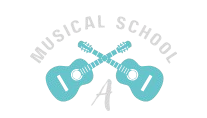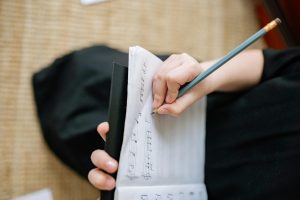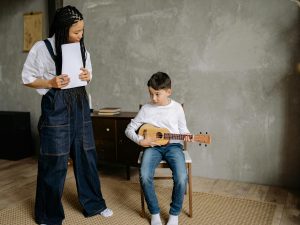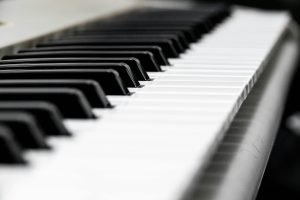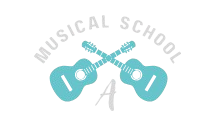Learning to play the guitar is an exciting journey, and one of the first — and most important — steps is mastering chords. Chords are the building blocks of most songs, and once you get a solid grip on them, you’ll be able to strum along to countless tunes, write your own music, and grow in confidence as a guitarist.
At [Your Music School Name], we help beginners develop strong foundations in chord playing so they can enjoy real progress from the very first lesson. In this guide, we’ll walk you through what chords are, which ones to learn first, and how to practice them effectively.
🎸 What Are Guitar Chords?
A chord is a group of notes played together to create harmony. On the guitar, chords are formed by pressing down specific strings on certain frets while strumming or picking.
Most beginner guitar chords are played using open strings, meaning some strings are played without being pressed down. These are known as open chords, and they’re an essential starting point for any beginner.
🧩 Why Learning Chords Matters
- 🎶 Play Real Songs Faster: Most popular songs use just a few basic chords.
- 🧠 Train Your Brain and Hands: Chords develop coordination, finger strength, and muscle memory.
- 🎤 Sing and Play Simultaneously: Chords make it easy to accompany your own voice.
- 🎼 Foundation for Theory and Composition: Chords help you understand harmony and songwriting structure.
🎯 Essential Chords for Beginners
Start with these basic open chords, which are used in hundreds of songs:
Major Chords:
- C Major
- D Major
- G Major
- A Major
- E Major
These chords sound happy, full, and bright — perfect for upbeat music.
Minor Chords:
- A Minor
- D Minor
- E Minor
Minor chords create a moodier, more emotional tone. You’ll often find them in ballads and blues.
✋ Tips for Learning and Playing Chords
✅ 1. Use Proper Finger Placement
- Press the string with your fingertip, not the pad.
- Place your finger just behind the fret — not on top of it.
- Keep your fingers arched and spaced so they don’t mute adjacent strings.
✅ 2. Strum and Check Each String
After forming the chord, strum one string at a time to ensure each note rings clearly. If a note sounds muted or buzzy, adjust your hand positioning.
✅ 3. Start Slow with Transitions
Changing from one chord to another can be tricky at first. Practice moving between two chords slowly and repeatedly — like from G to C, or E to A — until it becomes smooth.
✅ 4. Use a Metronome
Practicing with a slow beat trains you to switch chords in rhythm, a critical skill when playing full songs.
✅ 5. Practice Daily
Even 10–15 minutes a day will build strength and muscle memory over time. Consistency beats cramming!
🎵 Easy Songs to Practice Wit
Once you know a few chords, you can start playing simplified versions of popular songs like:
- “Horse with No Name” – America (Em, D6add9)
- “Knockin’ on Heaven’s Door” – Bob Dylan (G, D, Am, C)
- “Love Me Do” – The Beatles (G, C, D)
- “I’m Yours” – Jason Mraz (G, D, Em, C)
Practicing songs keeps learning fun and gives you a real sense of accomplishment.
🎒 Helpful Tools for Beginners
- Chord Charts & Diagrams – Learn to read and visualize finger placement.
- Tuner App or Device – Make sure your guitar is always in tune.
- Guitar Capo – Change the pitch of open chords to match a song’s key.
- Finger Strengtheners – Optional tools to build dexterity and endurance.
🧑🏫 How We Help at [Your Music School Name]
At our school, beginner guitar students benefit from:
- Step-by-step instruction
- Personalized feedback
- Technique correction
- Chord transition drills
- Fun performance opportunities
We make learning interactive, approachable, and tailored to your pace and style — whether you’re learning acoustic, electric, or classical guitar.
🌟 Final Thoughts
Mastering guitar chords is a journey, not a race. Be patient with your fingers, celebrate small victories, and enjoy the process of learning music. With time and practice, your hands will move across the fretboard with ease — and your favorite songs will be just a strum away.
Ready to start playing chords and songs with confidence?
Book your first guitar lesson at [Your Music School Name] today — and let us help you master the fretboard, one chord at a time.
